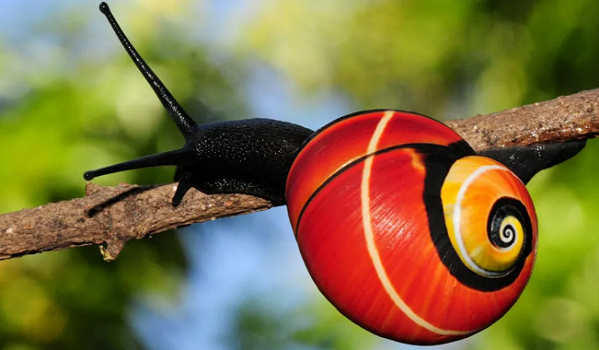
Victoria Gill, science correspondent for BBC News, reports on a mission led by Cuban and British biologists to save the endangered Polymita tree snails, threatened by own beauty in their native forest habitats in Cuba.
Researchers have embarked on a mission to save what some consider to be the world’s most beautiful snails and also unlock their biological secrets.
Endangered Polymita tree snails, which are disappearing from their native forest habitats in Eastern Cuba, have vibrant, colourful and extravagantly patterned shells. Unfortunately, those shells are desirable for collectors, and conservation experts say the shell trade is pushing the snails towards extinction.
Biologists in Cuba, and specialists at the University of Nottingham in the UK, have now teamed up with the goal of saving the six known species of Polymita.
The most endangered of those is Polymita sulphurosa, which is lime green with blue flame patterns around its coils and bright orange and yellow bands across its shell. But all the Polymita species are strikingly bright and colourful, which is an evolutionary mystery in itself.
“One of the reasons I’m interested in these snails is because they’re so beautiful,” explained evolutionary geneticist and mollusc expert Prof Angus Davison from the University of Nottingham. The irony, he said, is that this is the reason the snails are so threatened. “Their beauty attracts people who collect and trade shells. So the very thing that makes them different and interesting to me as a scientist is, unfortunately, what’s endangering them as well.” [. . .]
While there are international rules to protect Polymita snails, they are difficult to enforce. It is illegal – under the Convention on International Trade in Endangered Species – to take the snails or their shells out of Cuba without a permit. But it is legal to sell the shells elsewhere.
Prof Davison says that, with pressures like climate change and forest loss affecting their natural habitat in Cuba, “you can easily imagine where people collecting shells would tip a population over into local extinction”. [. . .]
To try to prevent this, Prof Davison is working closely with Prof Bernardo Reyes-Tur at the Universidad de Oriente, Santiago de Cuba, who is a conservation biologist. [. . .] Prof Reyes-Tur’s part of the endeavour is perhaps the most challenging: Working with unreliable power supplies and in a hot climate, he has brought Polymita snails into his own home for captive breeding. [. . .]
For full article, see https://www.bbc.com/news/articles/clyrv8ndzzjo?accountMarketingPreferences=off
[Photo above by Professor Bernardo Reyes-Tur: Polymita snail in its native forest habitat in Eastern Cuba.]
